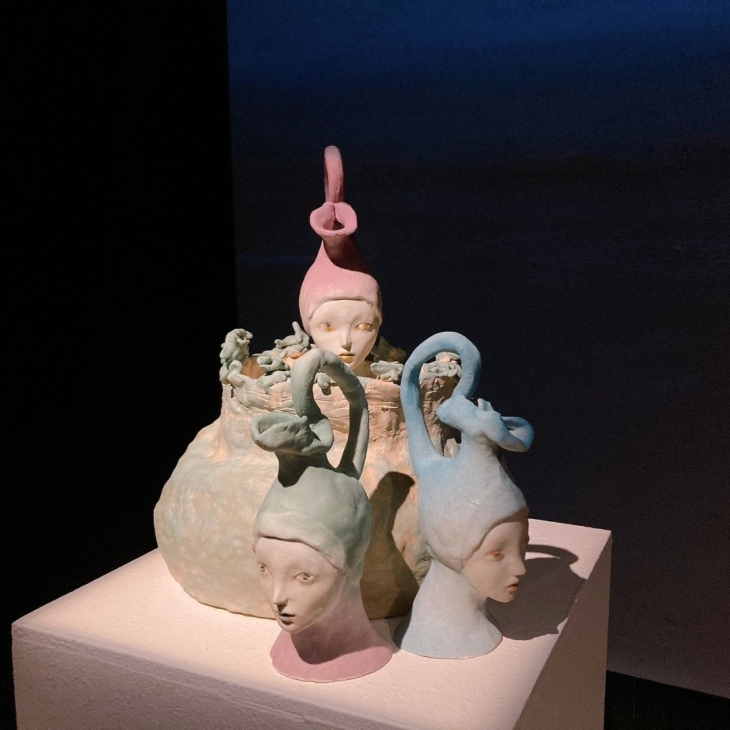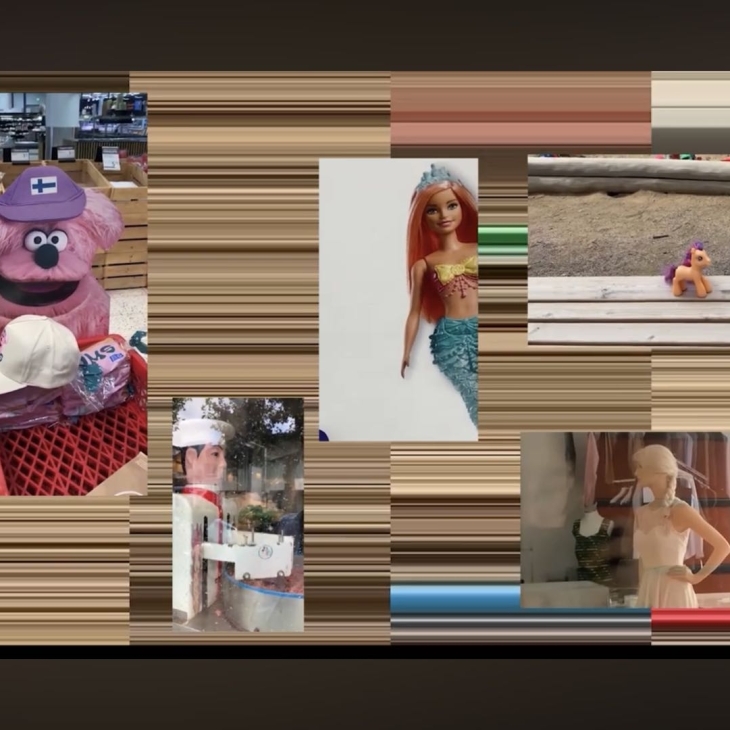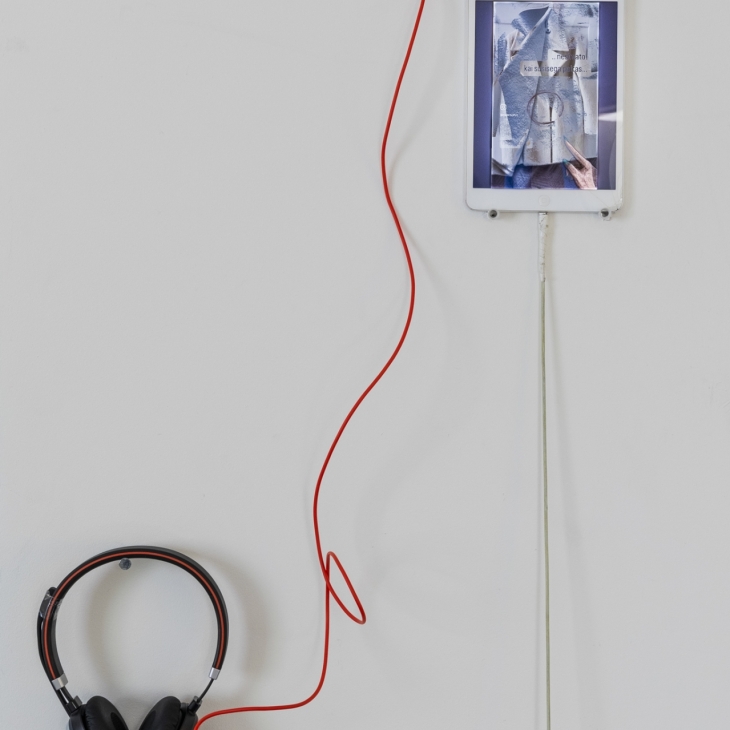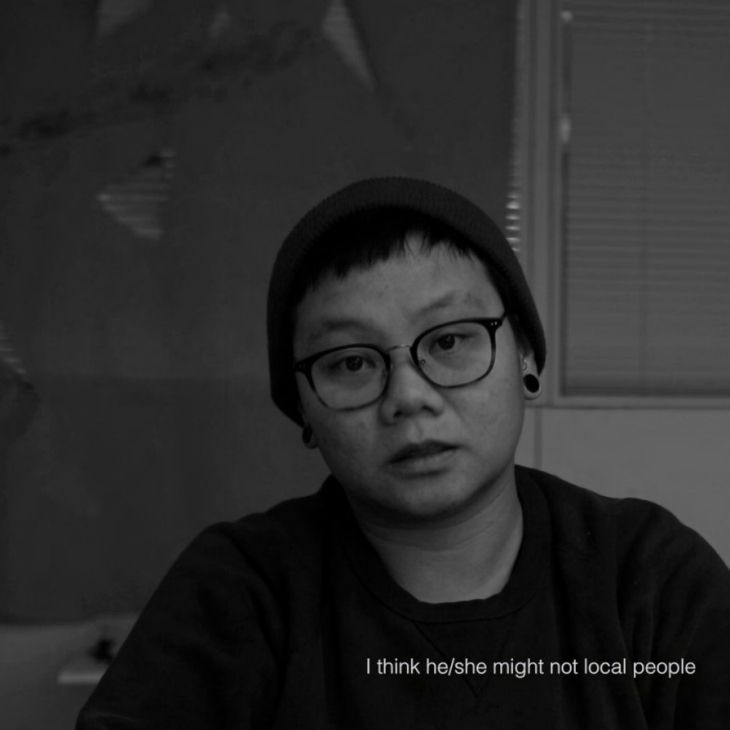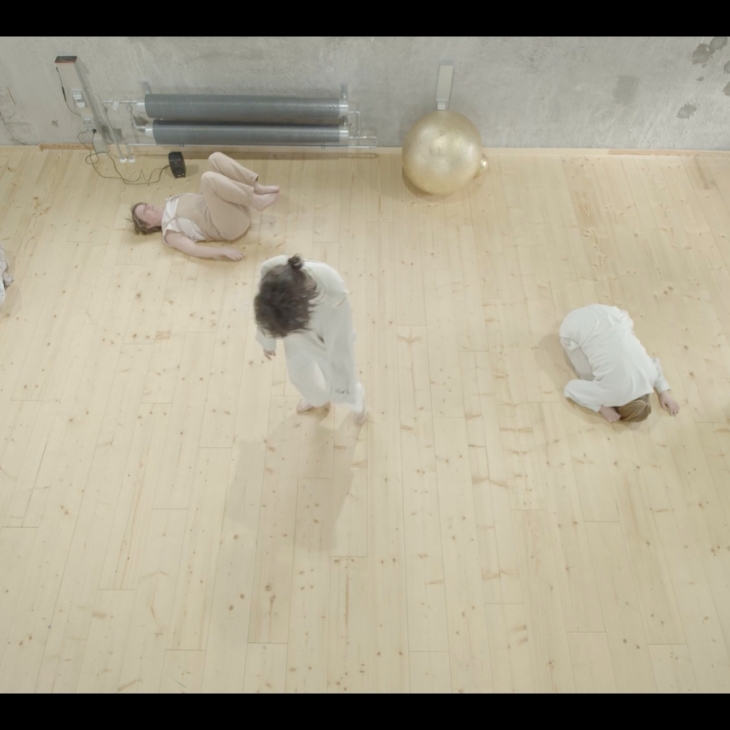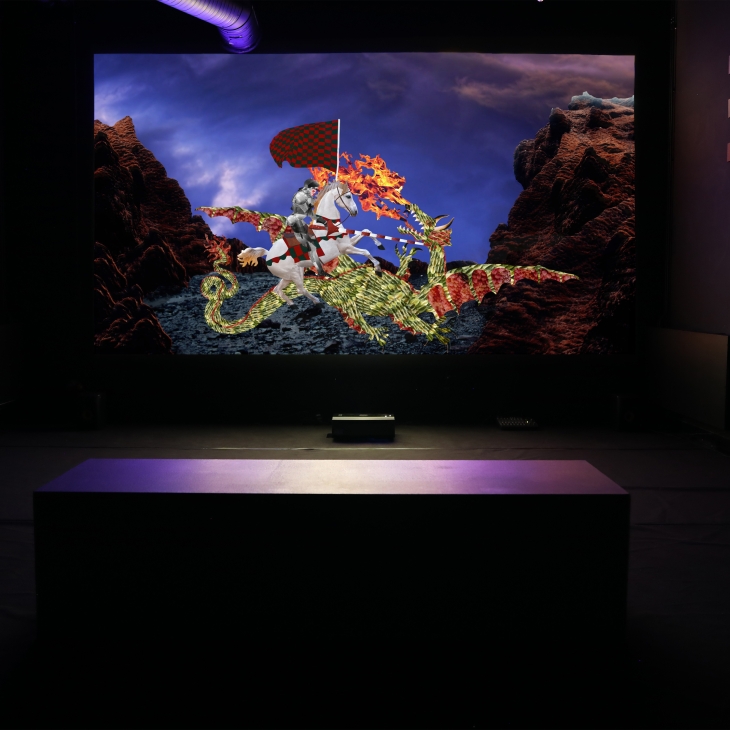The Dreamy Fish(Le poisson rêveur), 2023
300 x 169 cm
€2310
Moving image, sound
The artwork is a multidisciplinary exploration that weaves a narrative about the intricate relationship between humans and nonhumans in a post-apocalyptic world. Drawing inspiration from ancient Chinese philosophy and literature, the work adapts Pu Songling’s tale “The Raksha Country and the Sea Market” to create a surreal and thought-provoking narrative. The project employs a combination of installations and moving image to offer an immersive experience, with a focus on blurring the boundaries between reality and fiction, old and contemporary, and human and nonhuman.
The central narrative follows a protagonist who finds themselves in a land inhabited by locals with fish appearances, highlighting the complexities of human-nonhuman interactions and the challenges of intergroup communication. The use of fish as a symbol represents the nuanced and evolving dynamics between humans and other species, emphasizing the interconnectedness of nature and culture. The work employs storytelling as a space for unconventional and abstract expressions, aiming to foster understanding and care for the other, even within a detached narrative tone. In a world facing unprecedented challenges, the artwork encourages viewers to explore the profound connection between humans and nonhumans and reflect on the blurred boundaries that exist between them. The moving image presents a rich tapestry of elements, encompassing drawings, video game aesthetics, digital depictions of outer space, real-world footage, animations, and textual components. It is believed by the artist that art as a metalanguage has the power to transcend the boundaries of everyday reality to create a deeper connection with the audience.
The installation component of the project is a crucial element that complements and enhances the narrative conveyed through the moving images. It serves as a physical representation of the themes and concepts explored in the artwork. The installation consists of various elements, including ceramic jugs, ceramic cups, found objects like a steel rack, a golden bowl, and natural materials like stones and sand. These elements are carefully arranged to create a visually captivating and thought-provoking experience. The concept behind the installation revolves around the interplay of contrasts. It juxtaposes ancient and futuristic elements, artificial and organic materials, and the playful with the serious. For example, the ceramic jugs, inspired by historical artifacts, are glazed with vivid, futuristic colors, symbolizing the contrast between the old and contemporary. The white pedestal on which they are placed represents the artificial and the virtual, further emphasizing the dichotomy between the past and the present. This contrast-rich environment aims to engage viewers in a multi-layered experience that challenges their perceptions. Moreover, the installations serve to bridge the gap between modern science and ancient animism, and between objectivity and belief. They create a tangible connection between the narrative’s surreal world and the viewers’ physical space, blurring the line between the virtual and reality.
The centerpiece of the installation is called “Here, be the water”. This endeavor comprises one larger ceramic structure with three ceramic jugs, each adorned with the visage of a female. These jugs were meticulously cast in ceramics, drawing inspiration from historical artifacts the artist once encountered in a museum of history. However, they depart from tradition by being glazed with vivid, almost futuristic colors, introducing a striking contrast between the old and the contemporary. These ceramic jugs find their place on a pristine white pedestal, symbolizing the artificial and the virtual and further emphasizing the dichotomy between the past and the present. Morover, as a sort of tools for containing water, somehow they correspond with the narrative in the accompanying video depicting water and ocean, and the search for water as a source of life in the apocalypse.
Through the combination of sculptures, found objects, and natural materials, the installation conveys a sense of archaeology, artifice, and futurism, highlighting the multifaceted relationship between humans and nonhumans. The juxtaposition of different elements within the installation aligns with the project’s overarching themes of the complex dynamics between humans and nonhumans, the blurring of distinctions between nature and culture, and the need to navigate these intricacies in a post-apocalyptic world.
It is part of the BFA exhibition 2023 at the Academy of Fine Art, Uniarts Helsinki.

